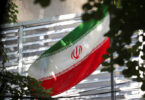AUCKLAND (WSWS): About 30,000 nurses, healthcare assistants and midwives at public hospitals across New Zealand held an eight-hour strike on June 9 to demand a decent pay offer and safe levels of staffing.
Thousands of healthcare workers, joined by family members and supporters, marched down Queen Street in Auckland, and thousands marched through Wellington and rallied outside parliament. Thousands more joined protests and pickets in Christchurch, Dunedin, Hamilton and many smaller centres. Many carried home-made placards with slogans such as “Being called a hero won’t pay the bills,” “Quality nurses need quality pay,” and “You deserve safe staffing when you’re in hospital.”
It was the second nationwide strike by public hospital workers under Prime Minister Jacinda Ardern’s Labour Party-led government. In 2018, a bitter pay dispute led to a 24-hour strike—the first nationwide nurses strike since 1989. This was part of an international upsurge by working people against austerity. It was followed in New Zealand by a series of strikes by junior doctors, teachers and other sections of the working class.
The 2018 deal eventually agreed to by New Zealand Nurses Organisation (NZNO) was a sellout, with wage increases of just 3 percent per annum and nothing to alleviate the staffing crisis in hospitals.
Wednesday’s strike followed the government’s announcement of a wage freeze on the vast majority of public sector workers—part of its plan to impose the burden of the economic crisis, triggered by the coronavirus pandemic, on working people.
The country’s District Health Boards (DHBs) have offered nurses an insulting pay increase of just 1.38 percent—below the current rate of inflation and well below the real increase in living costs, especially for housing. Last week, nurses overwhelmingly rejected a “revised” offer, put forward in a last-ditch attempt to stop the strike, which added a one-off taxable payment of $4,000.
The day before the strike, Finance Minister Grant Robertson defended the 1.38 percent offer, falsely telling Newshub that nurses “got a really big pay increase” in the 2018 settlement. Ardern told the media on June 7 that the government would not grant nurses the 17 percent pay rise, which NZNO had initially asked for in negotiations. She described the 1.38 percent offer as “reasonable and responsible” and said: “In this Covid environment, just as with the GFC [the global financial crisis that began in 2007–2008], we are in a position where we are financially constrained.”
Behind the government’s intransigence is the fear that the nurses’ strike could open the door to struggles by broad sections of workers against state and corporate austerity. Stuff reported that senior doctors in the Association of Salaried Medical Specialists “could soon be next to strike,” for the first time ever, with stop-work meetings coming up in August to discuss industrial action. Bus drivers in Wellington have also voted to strike against low pay and conditions.
The government’s main response to the pandemic, like the previous National Party government’s response to the GFC, has been to protect the super-rich. It has given tens of billions of dollars to large corporations, including several that have laid off thousands of workers.
Outside parliament yesterday, Health Minister Andrew Little addressed the strikers, posturing as a friend of healthcare workers. He declared: “I hear your message and we don’t disagree,” and said the government wanted “a health system that looks after its workers and… where people can work safely.” After speaking for about one minute Little was drowned out by boos and angry shouts. He cut his speech short and left. (See Facebook video at about 13 minutes)
Little is a former leader of the Engineering, Printing and Manufacturing Union (EPMU). He is also the Minister for Pike River Re-entry, who is currently overseeing the shutdown of the investigation into the 2010 mine disaster which killed 29 men.
At the Wellington protest, Leonie, who has been a nurse for six years, told the WSWS she was on strike because she was angry about what was effectively a “pay cut” and also to push “for us to have safe staffing. To be honest, I don’t know why we’re protesting for safe staffing. It should be a must. Our population has grown tremendously, so there’s a lot of pressure on us as nurses.”
Although the pandemic has so far not affected New Zealand as much as other countries, she said healthcare workers had been placed under tremendous strain. Many had to move out of their family homes during the lockdown period last year, and became “depressed and scared for their own lives… We’re always on alert all the time because the pandemic doesn’t look like it’s going away any time soon.”
Commenting on the 2018 strike, she said, “I didn’t think it was as effective. To this day we’re still waiting for the pay equity settlement that was agreed.” The Ardern government agreed to a “pay equity” process to lift nurses’ pay to the same level as comparable, male-dominated workforces. More than two years later, this has produced no results for workers.
Leonie added that inflation had outstripped wages and “we are struggling, we’re living on a day-to-day basis, from payday to payday. Talk to any nurse who’s been nursing for the last 10 years. I doubt they have that much savings put away to buy a home, because it’s way too expensive.” She believed the current NZNO leadership was better than in 2018, and she added that it would take “more strikes, rolling strikes” to force the government to make an improved offer.
At the rallies across the country there was strong support for more strikes. However, the NZNO has immediately resumed negotiations with the DHBs in an effort to avoid another walkout. Many nurses previously denounced the limited character of the eight-hour strike. As in 2018, some hospitals demanded more staffing to provide “life-preserving services” than they would have on a typical day—highlighting the extreme levels of understaffing that prevail.
The union bureaucracy is now setting the stage for another sellout. In an interview with Newshub on June 8, the union’s industrial services manager Glenda Alexander did not mention the 17 percent demand. She said it was “hard to put a figure” on what would be an acceptable pay offer, adding that “any improvement on 1.38 has got to be good for us, really.”
Despite the 2018 agreement effectively freezing wages and exacerbating the staffing crisis, the NZNO leadership celebrated Labour’s re-election last year, encouraging illusions that it would work to build “a first rate health system.”
The unions represent a small layer of well-heeled bureaucrats, whose aim is to enforce government austerity and ensure that workers remain isolated from each other. These organisations have worked to keep each struggle separate, even though every section of the working class faces the same basic issues of low pay and deteriorating, often unsafe, working conditions.
This situation raises the urgent need for new forms of organisation: democratic, rank-and-file committees controlled by the workers themselves, that are independent of the unions and all the capitalist parties. The International Committee of the Fourth International, which publishes the WSWS, is calling for the formation of an International Workers Alliance of Rank-and-File Committees to develop and coordinate a global fightback against austerity and the dangerous conditions facing all workers, which have been greatly worsened by the pandemic.






